
This morning at breakfast, most of the familiar faces I’d gotten used to over the past three weeks were already gone. Aside from me, only two others from the group were still around—it was officially the end of the trip. But I’d added an extra day in Yerevan, something I often do at the start or finish of a journey—to see a place on my own terms. And I’m glad I did. After days filled with monasteries, bus rides, and group dinners, it felt good to finally have one morning with no agenda. No schedule. Just me, the city, and the quiet freedom to wander wherever I wanted.
I started the morning at the post office in Republic Square to buy stamps for a final round of postcards. I wasn’t expecting much, but as soon as I walked in, I saw a panel of Soviet-era stained glass built right into the wall—a bold, colorful design in classic Soviet style. It’s complicated, of course. Soviet rule wasn’t exactly a golden age here, and for many people it’s tied to hard memories. But standing in front of this, I couldn’t help but admire it.
Beautiful things can come out of difficult times, and I was glad this piece had been preserved—and even more glad I happened to stumble onto it.
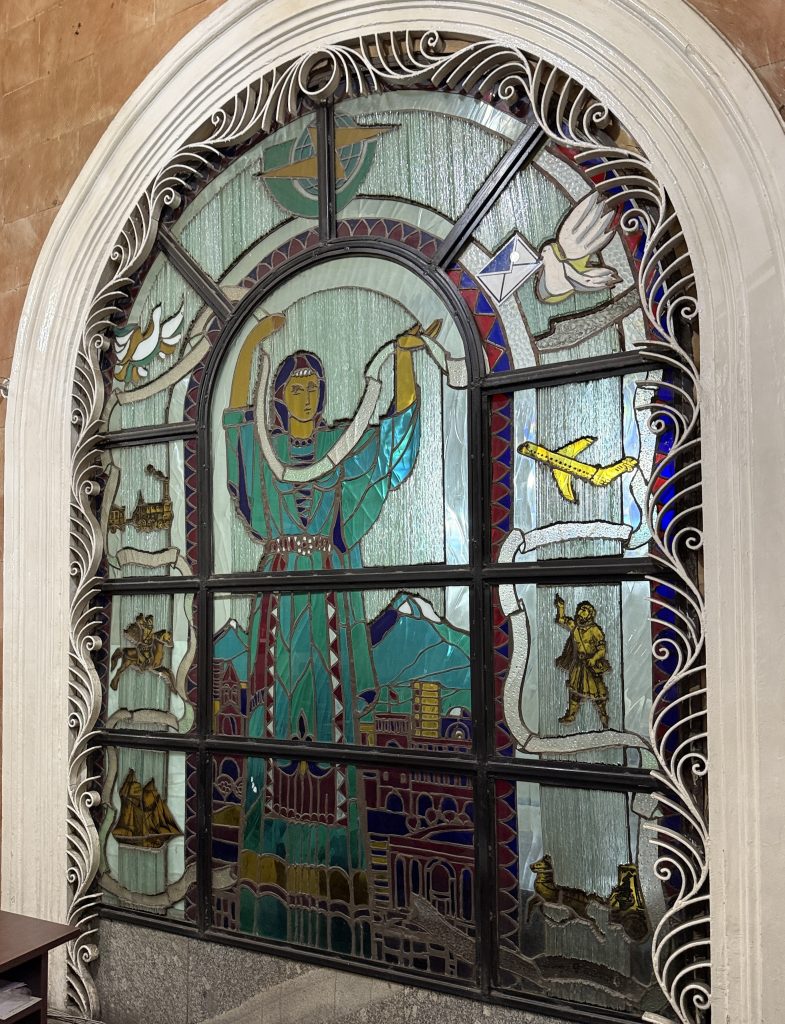
Armenia spent much of the 20th century under Soviet control, and reminders of that era still linger in architecture and public spaces. When I visited the Stans—Kazakhstan, Kyrgyzstan, Tajikistan, and Uzbekistan—I saw countless mosaics and stained-glass panels from the same period, so I’d been curious what might remain here. Finding this window felt like uncovering a hidden piece of that history—an everyday building carrying traces of a very different time.
From the post office, I headed over to GUM Market, Yerevan’s sprawling indoor bazaar. Inside, the air smelled of warm bread and spices, and stalls overflowed with dried apricots, figs, mulberries, and cherries, many stuffed with walnuts or pressed into candy-like rolls. You could also find fruit leather, spice balls, pickled vegetables, bundles of herbs, matsun (Armenian yogurt), cheeses, and homemade jams. Even if you weren’t buying, it was the kind of place you could easily lose an hour weaving through the aisles.
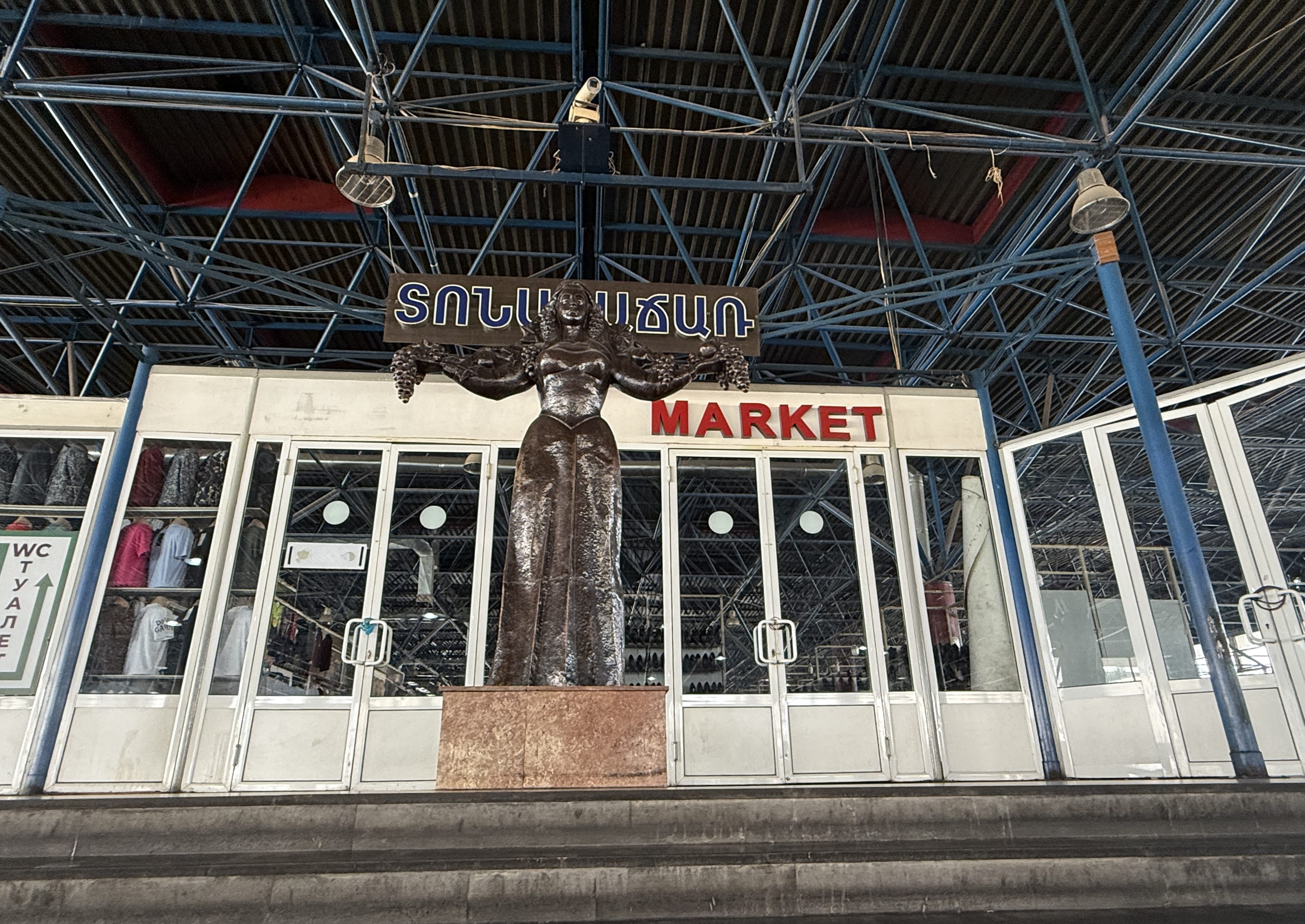
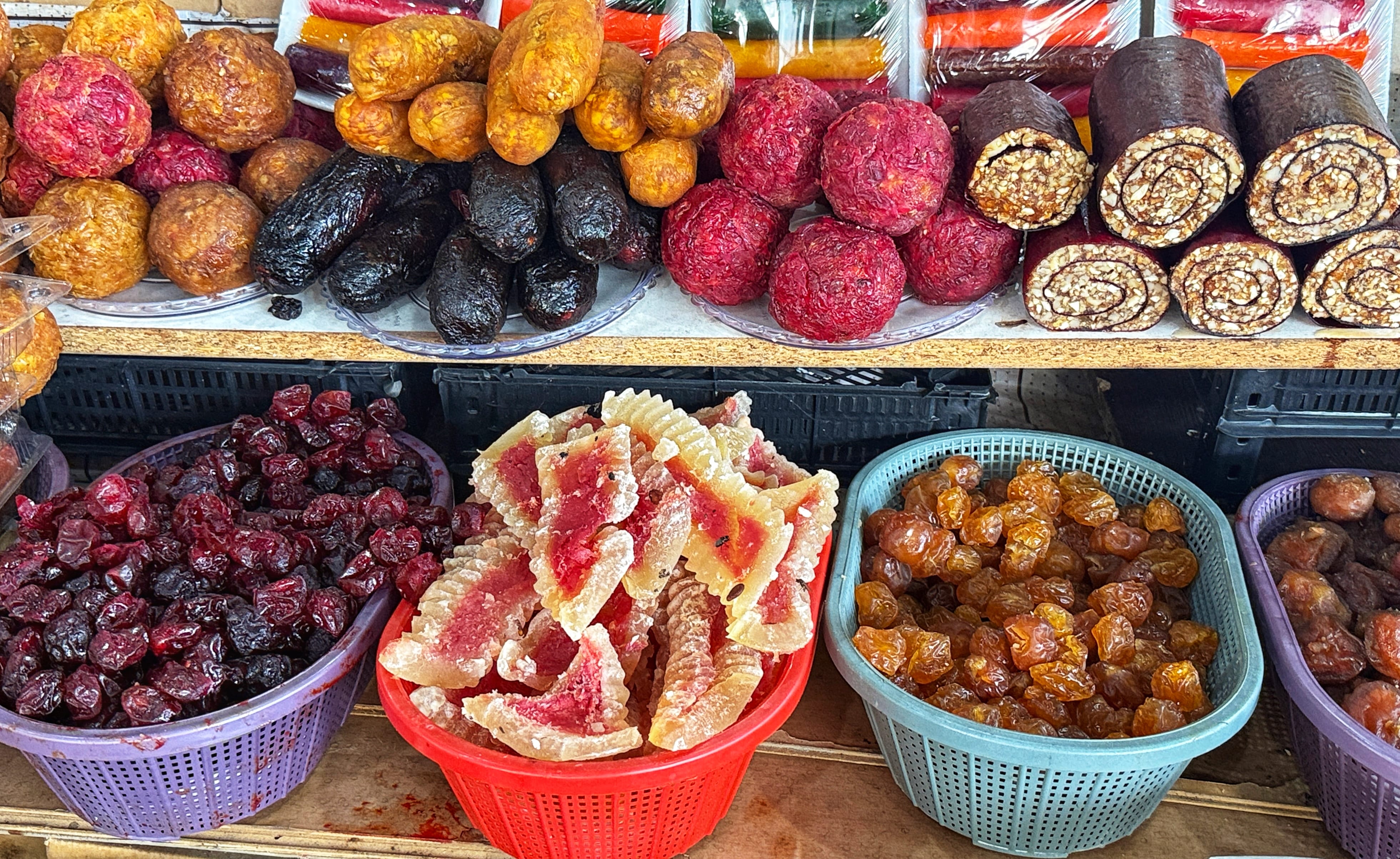
But it was the bread section that really caught my eye: towers of round loaves stacked high, golden rolls pressed into flower shapes, and thin sheets of lavash folded into neat piles, ready to be carried home.


From there I made my way to Yerevan Skatepark, set right in the middle of a cluster of old Soviet apartment buildings. The city built it in 2021 with support from the Union of Armenians of Ukraine, making it the country’s first modern skate park. There’s a circular track around the park, paths that cut through, and a set of ramps for skating.

What drew me into the park was a statue I noticed from the sidewalk—a bronze figure of a boy on a skateboard. His body is frozen mid-trick, arms out as if he’s about to launch into the air. It adds a playful energy to the park.

I eventually made it to Vernissage, Yerevan’s huge open-air market that takes up nearly a whole block with long rows of covered stalls. I’d heard it was all antiques, but it turned out to be a mix of everything—handmade crafts, tourist souvenirs, and plenty of local energy.

There were chess sets carved from wood, backgammon boards inlaid with mother-of-pearl, embroidered textiles, jewelry, T-shirts, paintings, instruments, and shelves packed with pottery.
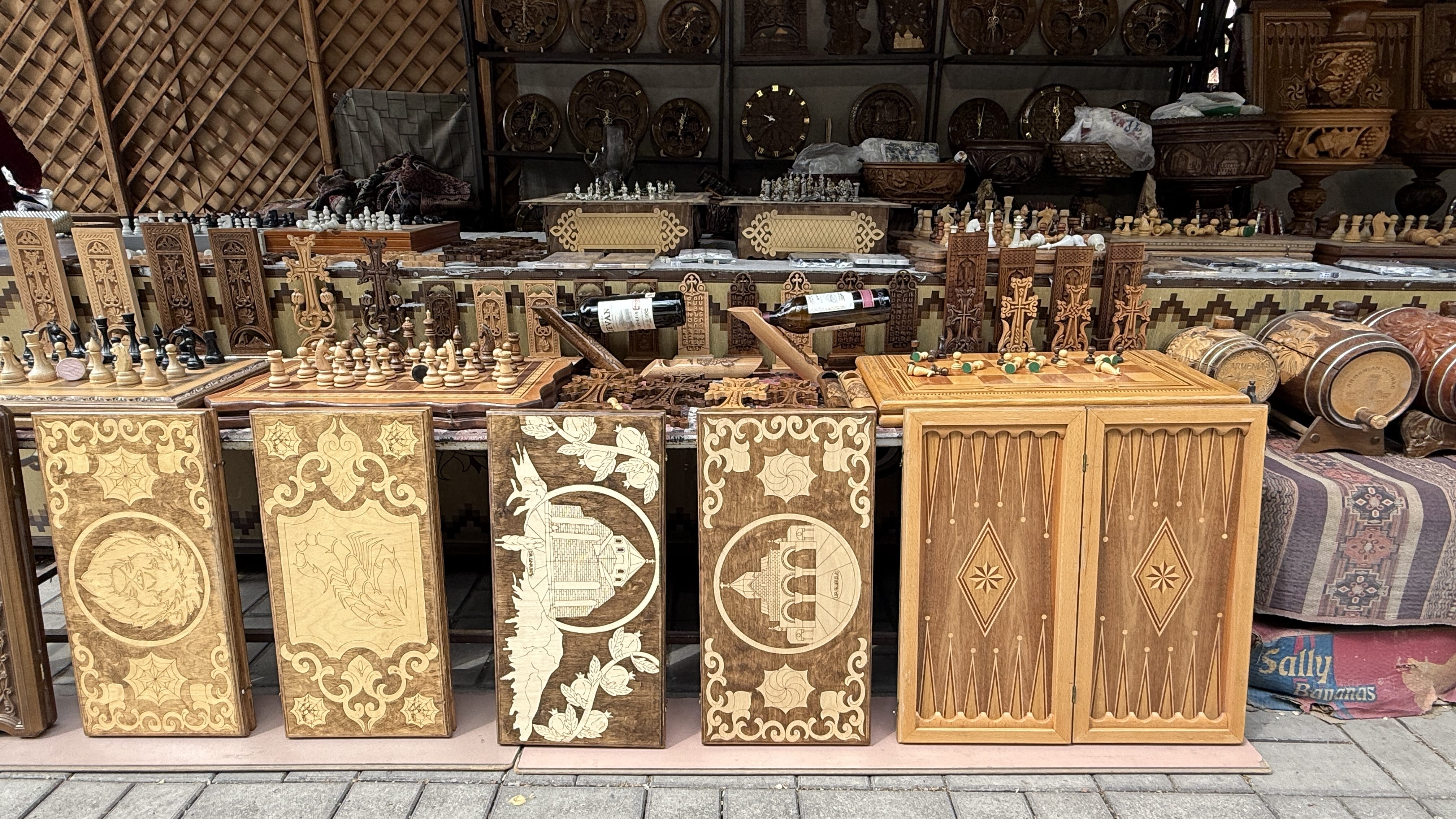
The rug section spilled out onto the sidewalk, with carpets draped over fences and even piled onto the roof of an old Soviet-era car. Tourist-y? A little. But also the kind of place where you never know what you’ll find, and worth a walk-through just for the atmosphere.
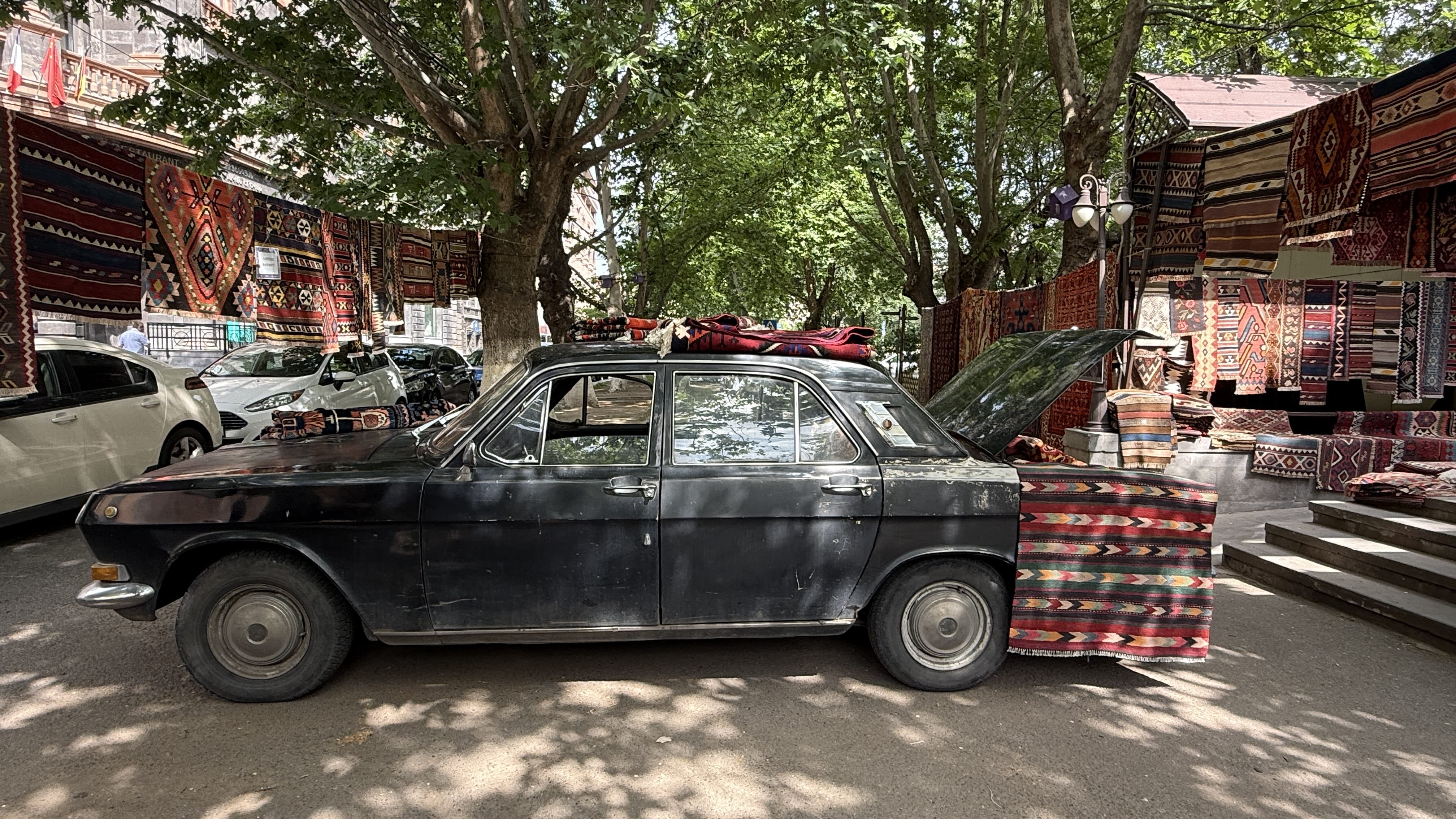
From Vernissage, I continued toward Lumen Coffee. Along the way, I passed a metro entrance at Republic Square and decided to follow it down. In “the Stans,” most of the metro stations I’d seen were decorated with mosaics or other public art, and I’d heard Yerevan’s often included the same. I hadn’t had the chance to check one out yet, so I was glad for the opportunity. At the bottom of the steps I found the Flower Fountain, a Soviet-era concrete sculpture shaped like a giant bloom. It clearly hasn’t worked in years—just a relic in the middle of the station—but it still carried a kind of quiet beauty.
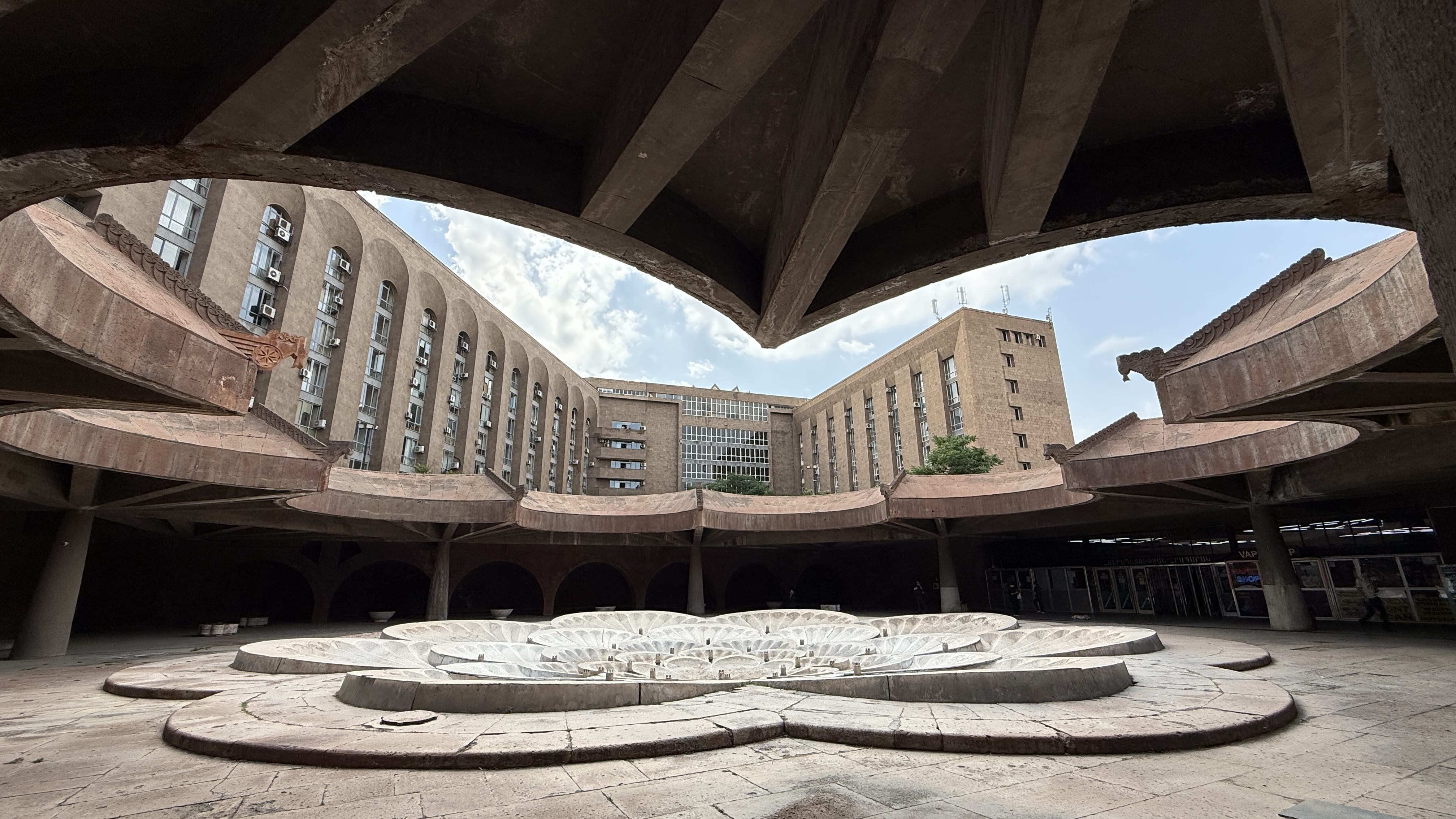
Back above ground, I wandered past painted steps, murals, and even another piece by Alec Monopoly.

As I continued, a building with tall white arches caught my eye. Music was drifting out from the top windows, and curious, I walked up to the entrance to see what it was. The sign read Aram Khachaturian Museum, and since it was open, I stepped inside. I hadn’t known much about him beyond that he was an Armenian composer, but in fact he’s one of the country’s most celebrated cultural figures—famous for his ballets, symphonies, and film scores. The museum is set in the house where he once lived, filled with personal artifacts, manuscripts, and memorabilia that give a sense of both the man and his music.

One of his pieces, Masquerade, was playing, and I realized I’d already heard it earlier in the week at the fountain show in Republic Square. Funny how that circled back. Between Aram Khachaturian (KHAH-chuh-TOOR-ee-uhn)and Charles Aznavour (az-na-VOOR), I’d stumbled onto two major Armenian artists I hadn’t known much about before this trip—and both of them left a mark.
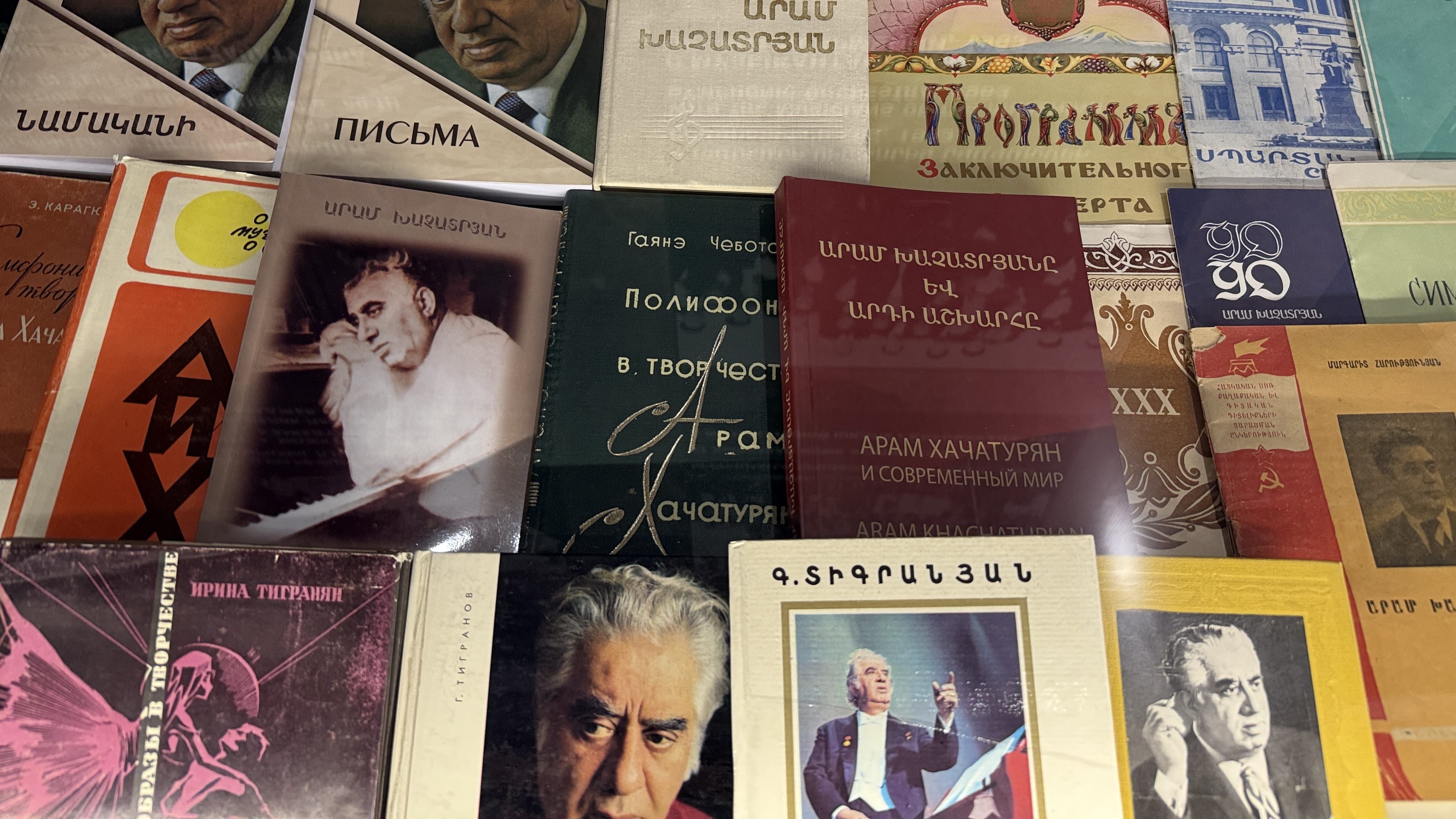
I eventually arrived at Lumen Coffee and quickly fell in love with it. I wish there were a place like this back home—I’d be there all the time. The space felt more like a vintage reading room than a café—painted ceilings, carved wood, just a handful of small round tables, and a wall glowing with a neon sign that read: coffee, music, people. The shelves were lined with books and vinyl records. I ordered a grilled halloumi and avocado salad and a cold brew—delicious.
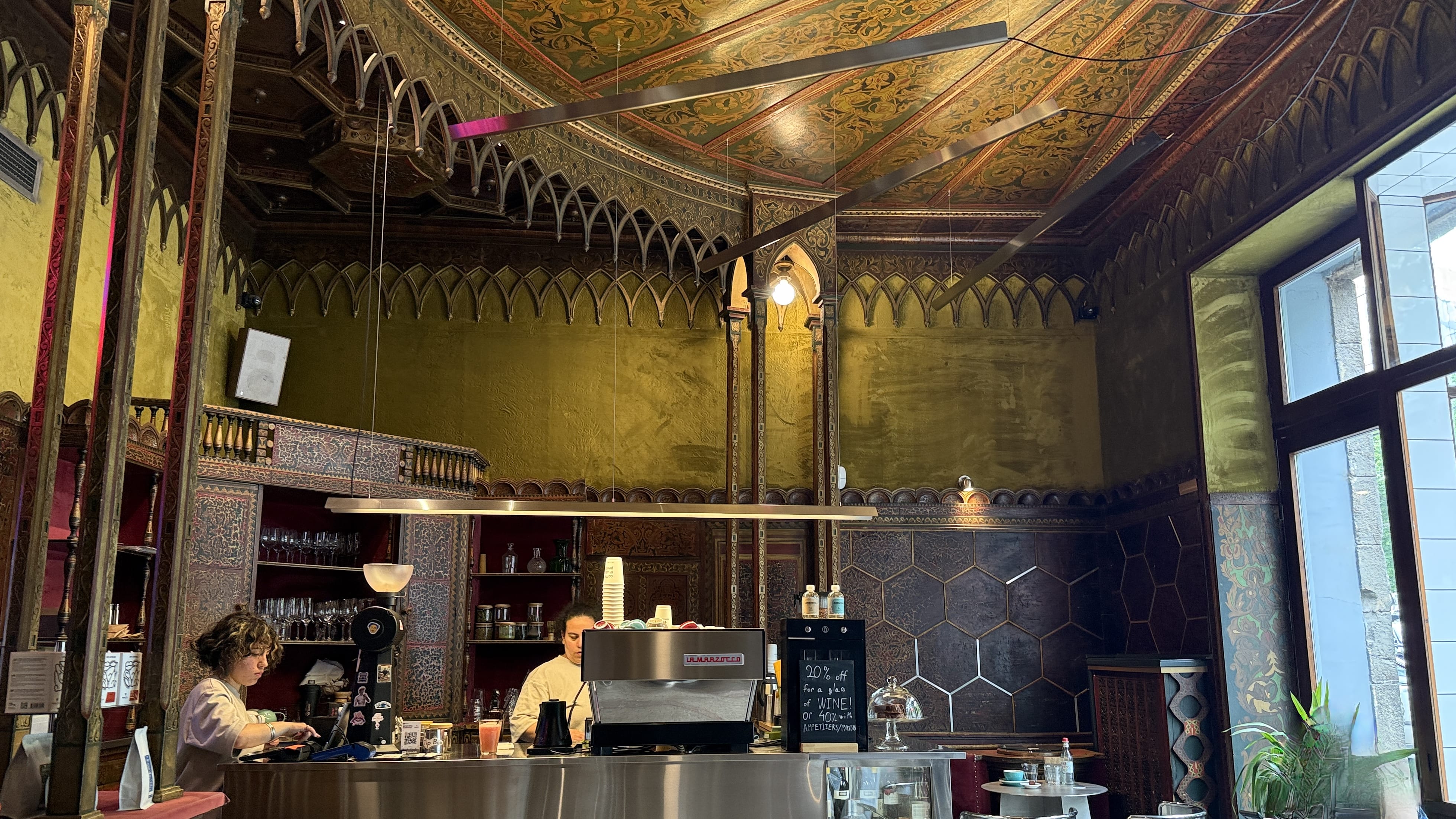
After lunch, I made my way back to the Cascade Complex, which I’d visited earlier in the trip but hadn’t had time to really explore. The Cascade is one of Yerevan’s landmarks—a massive limestone stairway that climbs the hillside in terraces, with fountains, gardens, and sculptures scattered along the way. From the top, you get wide views of the city with Mount Ararat in the distance; from the bottom, it feels like an open-air museum pulling you upward.

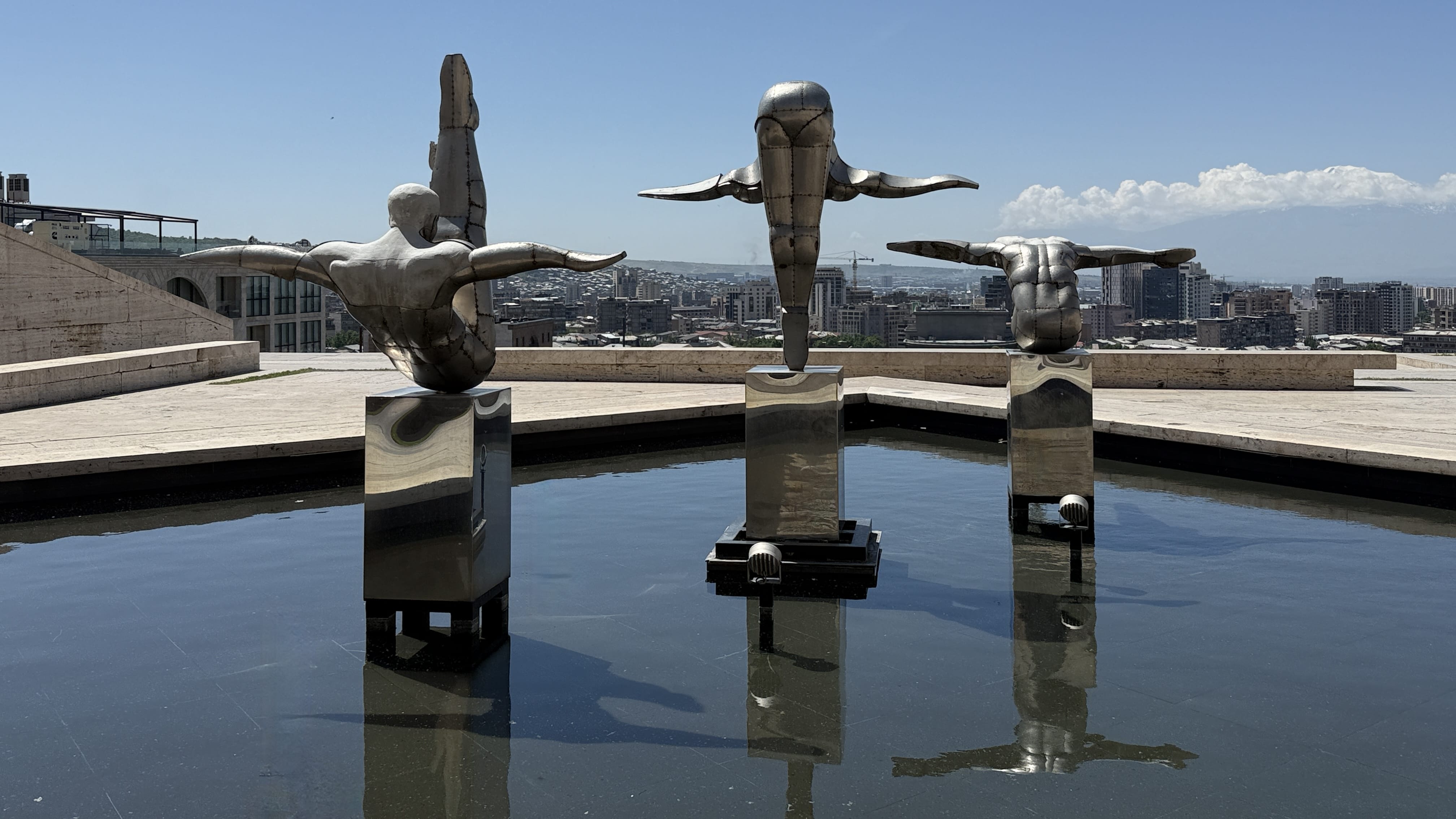
Inside is the Cafesjian Center for the Arts, a contemporary museum spread over five levels, connected by escalators, and filled with glasswork, textiles, and bold experimental pieces. At the base, a landscaped park with benches and even more sculptures makes it as much a gathering place as an art site.
The whole complex is worth experiencing, inside and out. I loved sitting on the upper steps looking out over the city, and later on the benches in front, surrounded by green space and statues.
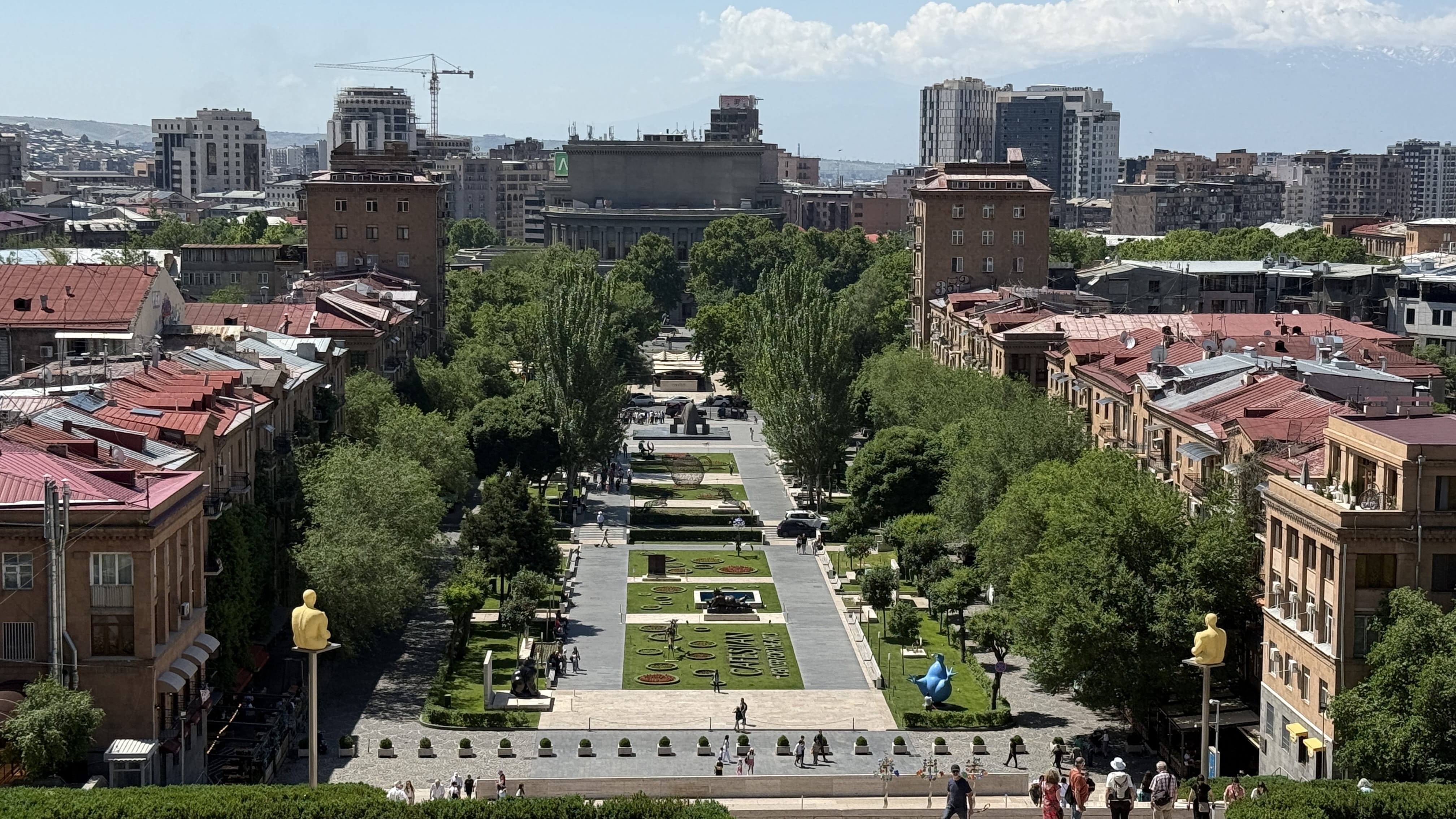
From the Cascade Complex., I made my way to Charles Aznavour Square because I recently learned there was a Soviet bas-relief inside the Stanislavski Russian Drama Theater. I took a quick look—plus it was nice to visit the square and fountain one more time.
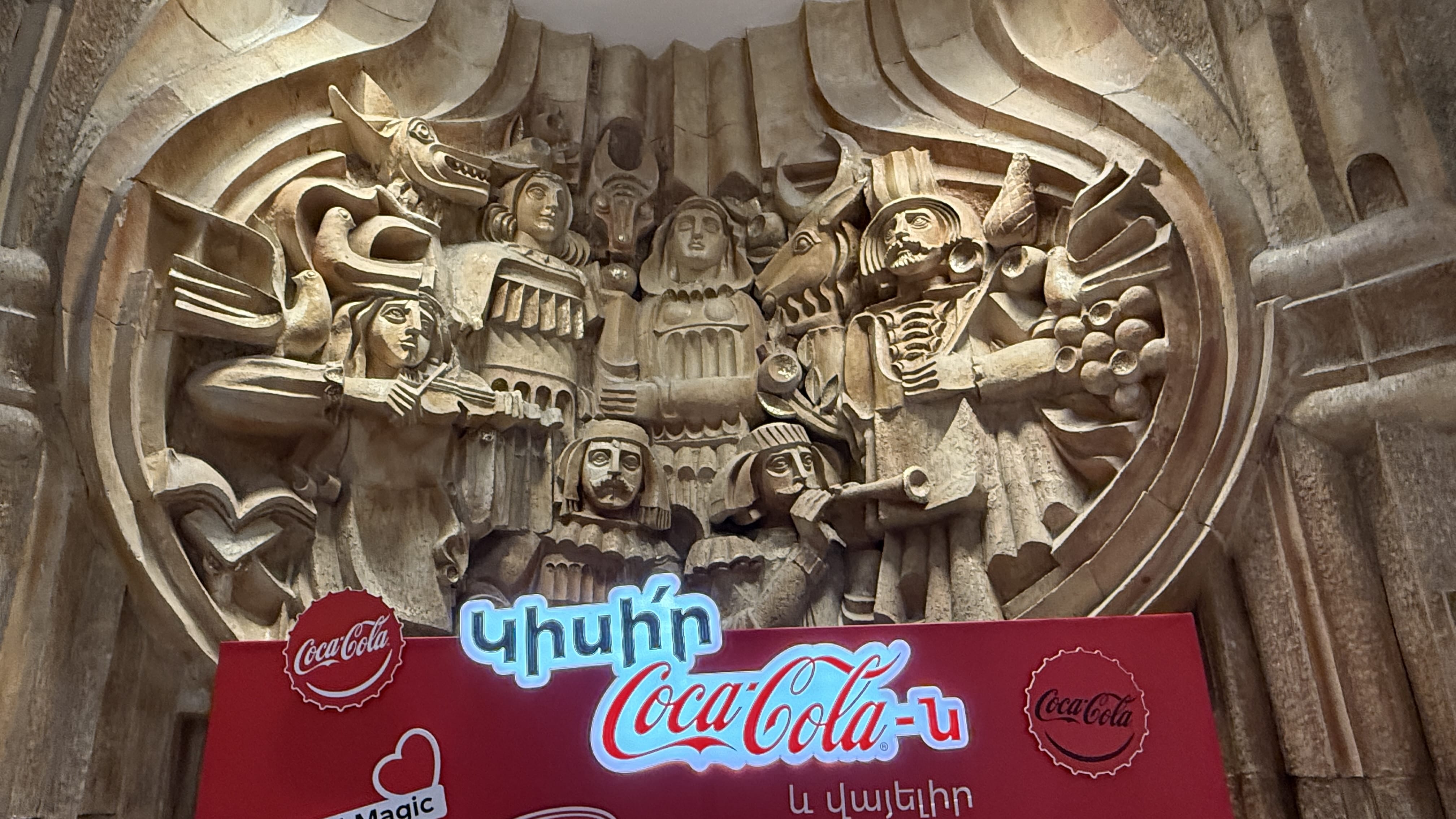
My last stop was the Blue Mosque, Yerevan’s only active mosque. It sits on a busy street lined with shops, but the tiled entranceway—bright blues and turquoise—makes it easy to spot.
The mosque dates back to the 1760s, built during Persian rule, and its survival is remarkable. During the Soviet years it was even turned into a planetarium before being restored in the 1990s. After Armenia regained independence in the 1990s, it was restored with support from Iran and reopened as a functioning mosque.
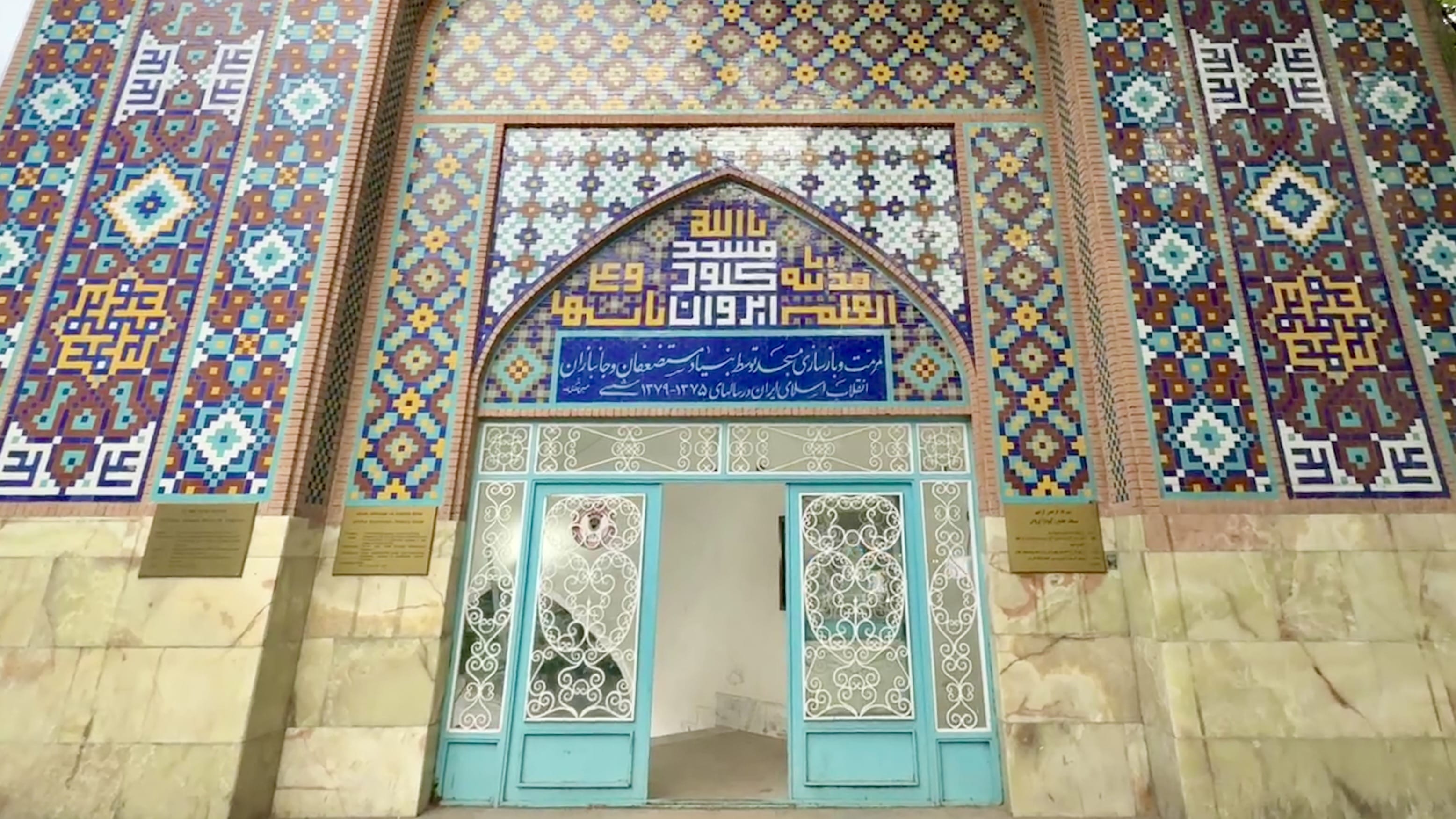
Inside, the courtyard was calm and green—a sharp contrast to the traffic outside. The main prayer hall was closed, but the surrounding arcades were open, lined with photos and plaques telling its long history.

I still had a list of places I wanted to see, but I had to head back to the hotel. My flight was early, and with some check-in issues to sort out, the rest of the afternoon went to tech problems and phone calls.
Early evening, I met up with the two people I’d been traveling with for dinner at a place called Shaghig, which serves Western Armenian and Mediterranean food. We shared a few dishes—chopped salad, hummus, baba ghanoush, and some really good lentil cakes. During dinner, we all caught each other up on what we’d done that day.
After dinner, the three of us walked back to the Cascade Complex. On the last Friday of each month, they host a community event with traditional Armenian dancing. Lucky for us, our visit fell on the final Friday in May. The turnout was huge—locals and tourists alike. Before each dance, someone demonstrated the steps so even first-timers could join in. The energy was welcoming and lively—no pressure, just joy.
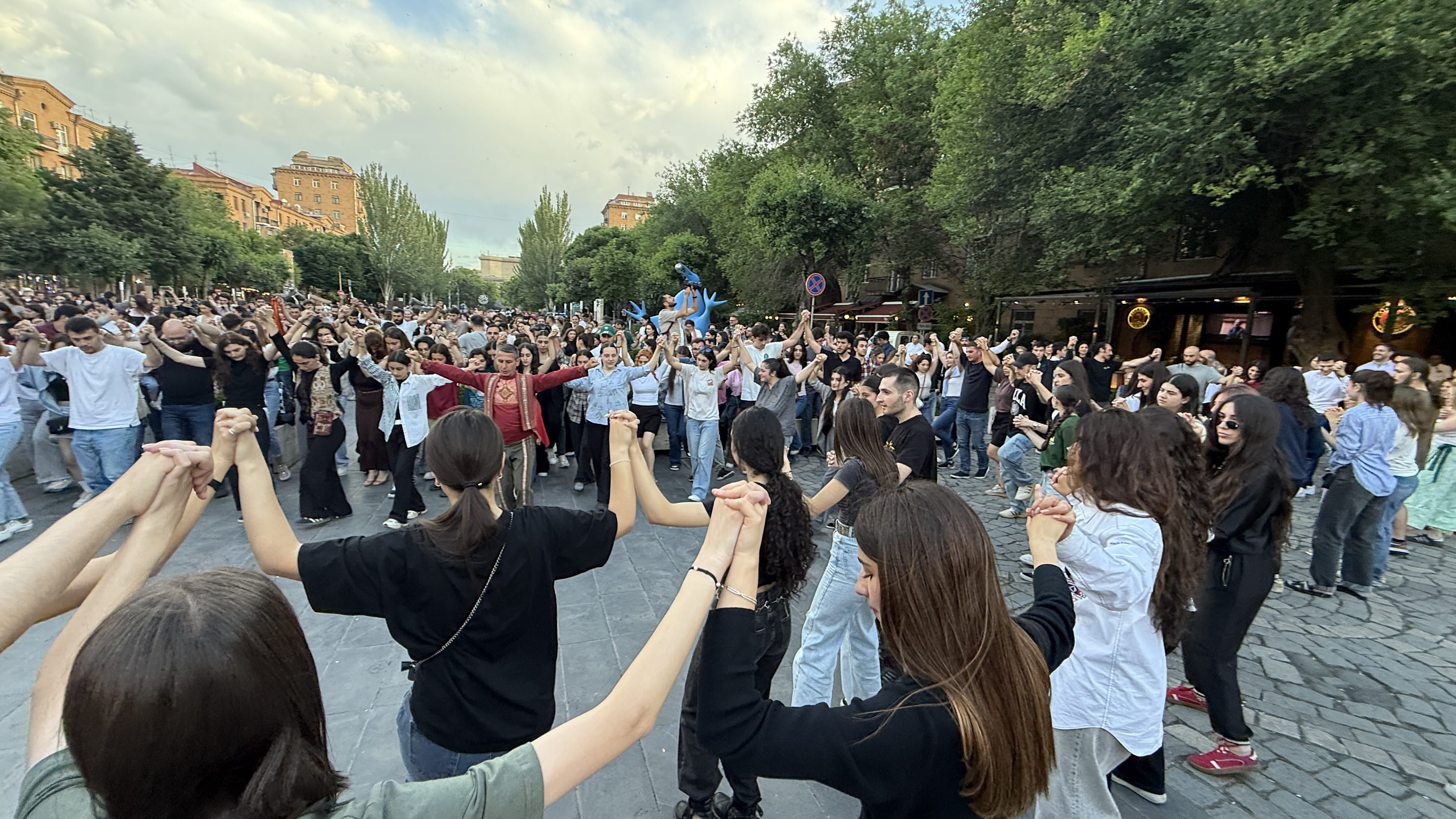
On the way back to the hotel, we made one final stop at Republic Square to catch the end of the musical water show. Water jets moved in time with the music, lights rippling across the square. It felt like the perfect closing scene—playful, theatrical, and a little sentimental. And of all things, one of the songs was Masquerade—but unlike the first time I’d heard it, I now knew the composer: Aram Khachaturian.

A soft landing at the end of a big trip.
And with that, my three weeks in the Caucasus came to an end—beginning in Azerbaijan, winding through Georgia, and closing in Armenia. I arrived knowing little about this corner of the world, and left with far more than I expected.



Hi, I’m JoAnne—writer, wanderer, and lover of places that surprise me. I’ve traveled to 60+ countries (and counting), usually with a camera in one hand and a notebook in the other. I’m drawn to mosaics, markets, and mountains, and I write to remember what moved me. When I’m not traveling, I’m working on my blog Travels Afoot, trying new creative projects, or planning my next adventure.